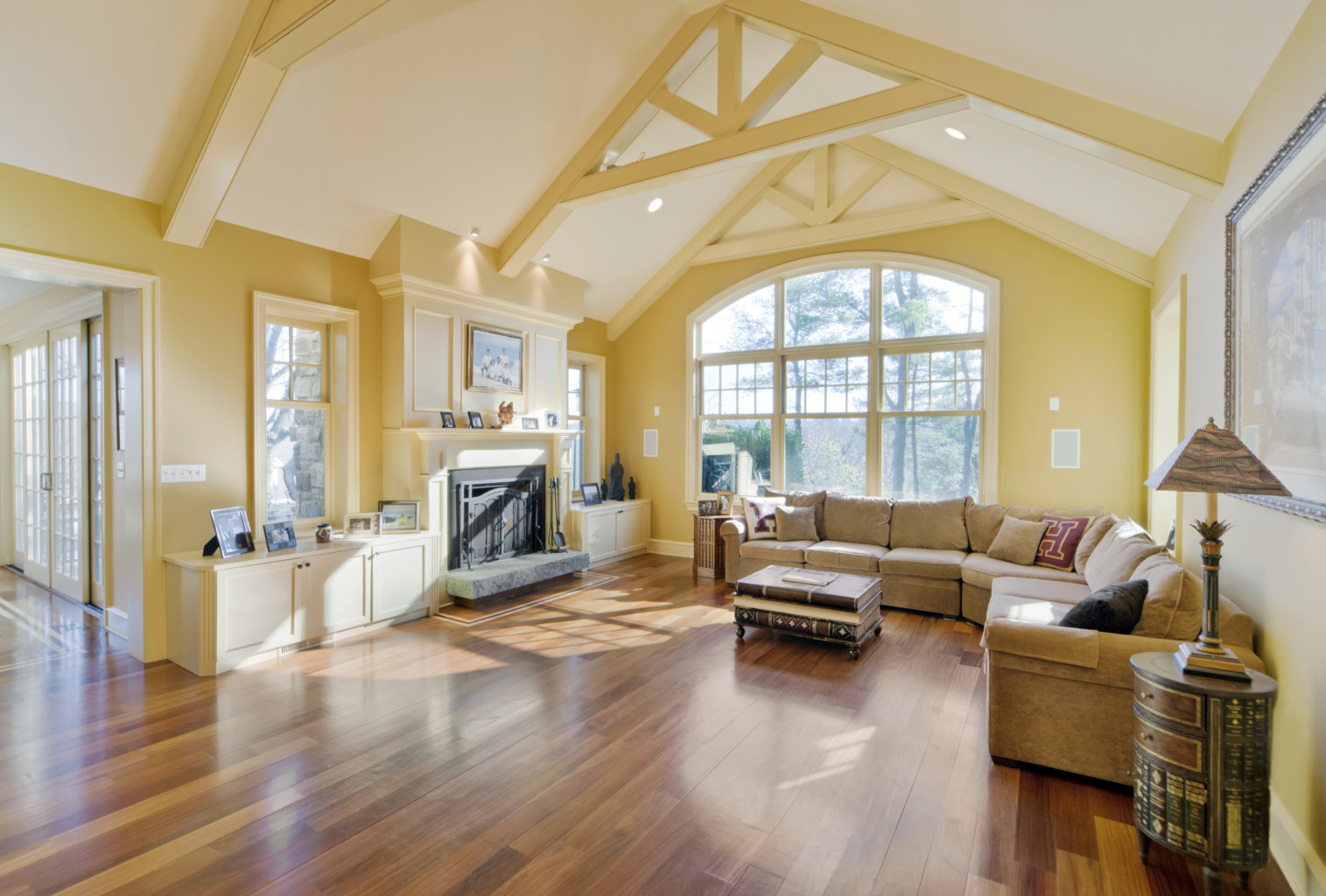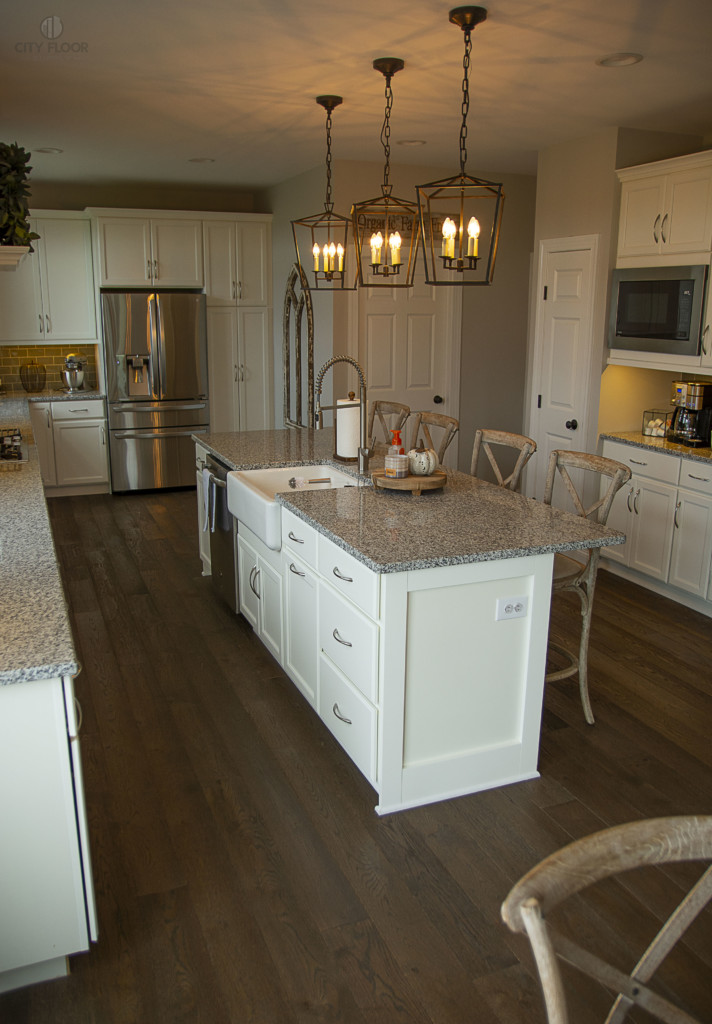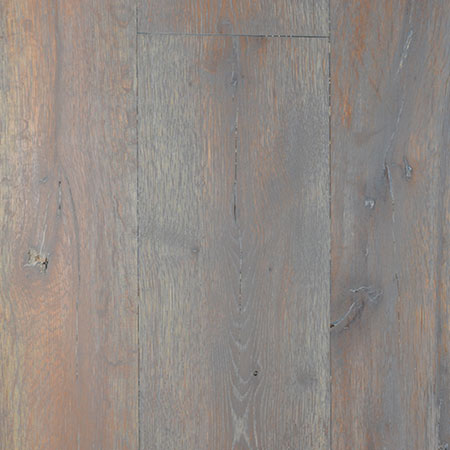Want to freshen up the style of a room in your home? Have you ever thought of changing the floors to create a completely different look in the room? Wide plank floors can be a great and very effective way to achieve this, especially if you’re transitioning from a carpet or tile floor, or even from a strip (narrow) wood floor.
A great thing about wide plank floors in particular is that there are so many different ways to customize the new floor to make your space look fresh and new!
It might sound like a drastic change, however, if you choose prefinished, engineered wide plank floors in particular, not too much work is involved. Or, instead of ripping up the old floors, you can simply refinish and re-stain your current floor if you already have wide plank flooring. If you’re unsure about whether or not to replace the carpet in your home with wide plank floors, keep in mind that doing so could increase the resale value of your home!
Making different choices can impact the final look of the floors and therefore the look of your space, from species to stains. Here are a few of the factors you can tweak and adjust to achieve different looks in a wide plank floor.
If you’d like to completely replace your current floor, such as in cases where you are replacing a carpet or a strip floor, the species is the foundation of how the floor will ultimately look. Different species have completely different looks. Hickory looks different from walnut, which looks different from oak, and so on.
When choosing a wood floor species, have to think about not just the color but also the character of the species itself. For example, white oak tends to have a lot of knots, which makes it a great choice for achieving a rustic look in a space, whereas walnut often contains burls and variable hues. Check out our wide plank species guide for comprehensive information on the characteristics of the most popular wood species.
Reclaimed Wood vs. New Wood
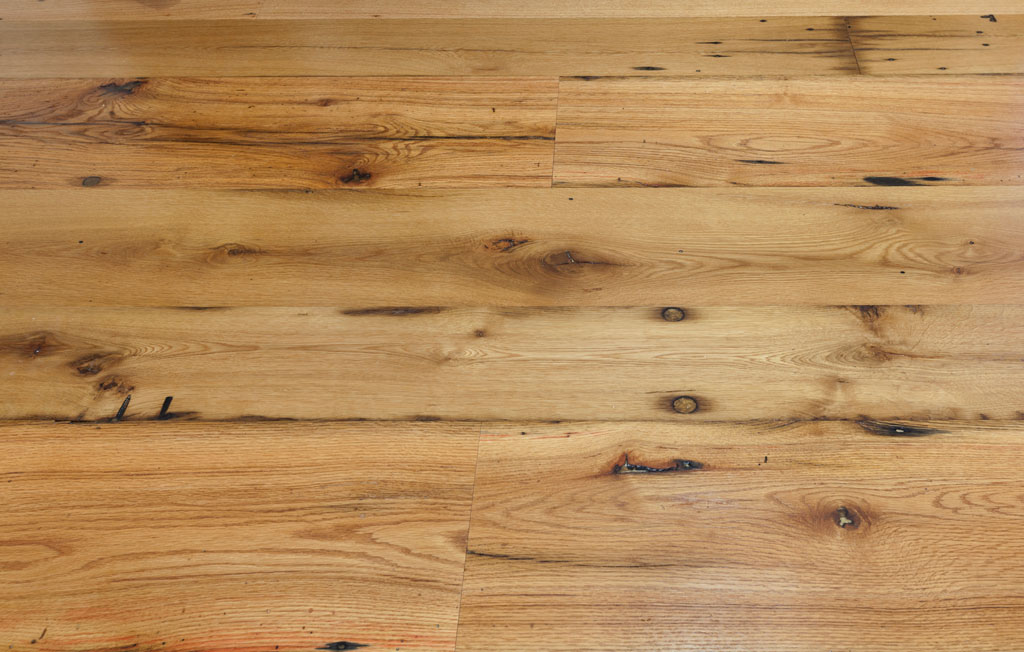
If you want to achieve a rustic look in your floors, a reclaimed wide plank floor is a great choice. Usually repurposed from old barns, and factories, it has the original patina of the wood for a true old-world, cozy style that translates well into a modern design.
When you’re using a reclaimed floor, you’ll usually want to pair it with a natural, matte finish to retain the original look and patina of the wood.
Another option is to select a newly milled floor but replicating the reclaimed look by getting it hand-scraped.
However, if you’d like a cleaner, fresher look or you would like to stain your floors, you’d most likely opt for newly milled wood floor.
You can choose from dark stains, light stains, a graywashed, or a whitewashed floor––the choices for stain are nearly limitless.
Lighter colored stains like white washed and graywashed floors are particularly popular in certain areas and can lend the floors a beachy look.
A dark stain like Ebony or Jacobean is usually most compatible with a white oak floor. Keep in mind that a dark floor will show dirt, dust, and scuffs more readily than a lighter colored floor, so the stain color that you choose will depend on your needs and lifestyle. For example, if you have small children and/or a lot of pets in the house, a dark stained floor might not be the ideal choice.
Of course, you can also opt to not stain the floors and keep its natural color.
Finishes
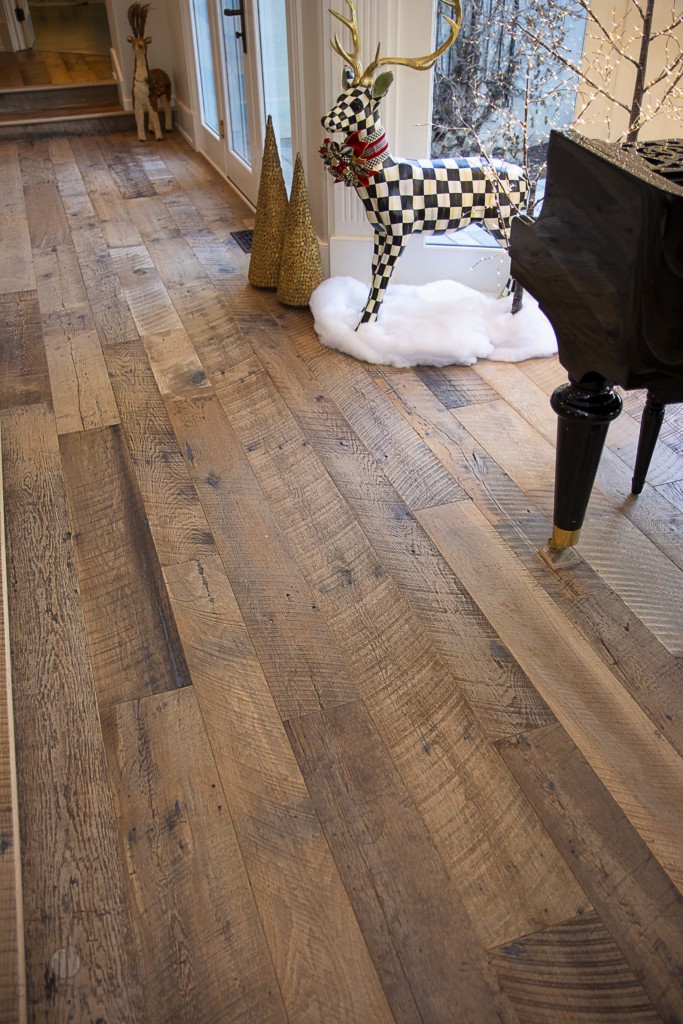
If you opt for an unfinished floor, your contractor can site-finish to your liking with your choice of product.
The finish is what will ultimately protect your floors from damage, so it’s important to choose a durable product, especially if your floor will see a lot of foot traffic.
Certain finishes have more VOCs (volatile organic chemicals) than others. If you’re concerned about air quality, then you will want to opt for a low-VOC or no-VOC finish. Generally, oil-based polyurethane finishes will have more VOCs than alternative products. Luckily, there are many low-VOC/no-VOC finishes on the market that provide plenty of durability without off-gassing harsh chemicals.
The character of the finish itself will also contribute to the final look of the floor.
Choose a natural/matte finish to showcase the character of the wood without covering it up. A glossy finish will give the floor a sheen which ultimately allows less of the wood’s character to come through, which some people might prefer over a natural finish where, in some cases, the fact that there is no sheen makes it look like the floor isn’t finished at all!
Glossy finishes are becoming less popular as time goes on, and matte finishes are gaining popularity. However, the choice between a glossy and matte finish ultimately comes down to your aesthetic preference––there’s no “right” or “wrong” choice when it comes to choosing a sheen level.
Need Guidance?
If all of this information is overwhelming and you need some guidance on which choices to make for your wide plank floor, we can help! We have wide plank experts on our staff who are here to guide you through the entire process, from choosing the species to the finish. Call us at (877) 697-5265 or fill out a form to request a quote for your upcoming project.
